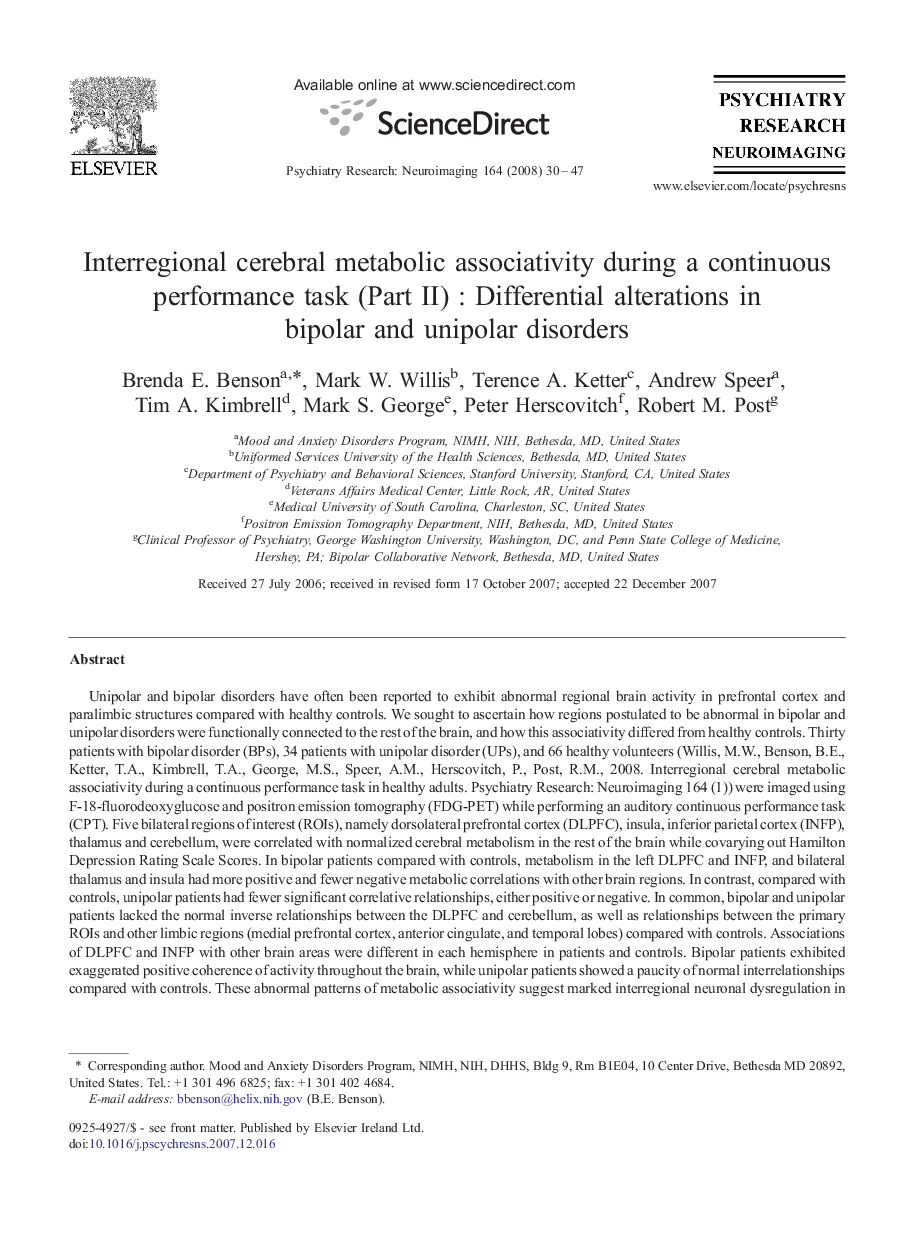| کد مقاله | کد نشریه | سال انتشار | مقاله انگلیسی | نسخه تمام متن |
|---|---|---|---|---|
| 334615 | 546606 | 2008 | 18 صفحه PDF | دانلود رایگان |

Unipolar and bipolar disorders have often been reported to exhibit abnormal regional brain activity in prefrontal cortex and paralimbic structures compared with healthy controls. We sought to ascertain how regions postulated to be abnormal in bipolar and unipolar disorders were functionally connected to the rest of the brain, and how this associativity differed from healthy controls. Thirty patients with bipolar disorder (BPs), 34 patients with unipolar disorder (UPs), and 66 healthy volunteers (Willis, M.W., Benson, B.E., Ketter, T.A., Kimbrell, T.A., George, M.S., Speer, A.M., Herscovitch, P., Post, R.M., 2008. Interregional cerebral metabolic associativity during a continuous performance task in healthy adults. Psychiatry Research: Neuroimaging 164 (1)) were imaged using F-18-fluorodeoxyglucose and positron emission tomography (FDG-PET) while performing an auditory continuous performance task (CPT). Five bilateral regions of interest (ROIs), namely dorsolateral prefrontal cortex (DLPFC), insula, inferior parietal cortex (INFP), thalamus and cerebellum, were correlated with normalized cerebral metabolism in the rest of the brain while covarying out Hamilton Depression Rating Scale Scores. In bipolar patients compared with controls, metabolism in the left DLPFC and INFP, and bilateral thalamus and insula had more positive and fewer negative metabolic correlations with other brain regions. In contrast, compared with controls, unipolar patients had fewer significant correlative relationships, either positive or negative. In common, bipolar and unipolar patients lacked the normal inverse relationships between the DLPFC and cerebellum, as well as relationships between the primary ROIs and other limbic regions (medial prefrontal cortex, anterior cingulate, and temporal lobes) compared with controls. Associations of DLPFC and INFP with other brain areas were different in each hemisphere in patients and controls. Bipolar patients exhibited exaggerated positive coherence of activity throughout the brain, while unipolar patients showed a paucity of normal interrelationships compared with controls. These abnormal patterns of metabolic associativity suggest marked interregional neuronal dysregulation in bipolar and unipolar illness exists beyond that of mere absolute regional differences from control levels, and provides rationale for using acute and long-term therapies that may re-establish and maintain normal associativity in these devastating illnesses.
Journal: Psychiatry Research: Neuroimaging - Volume 164, Issue 1, 30 October 2008, Pages 30–47